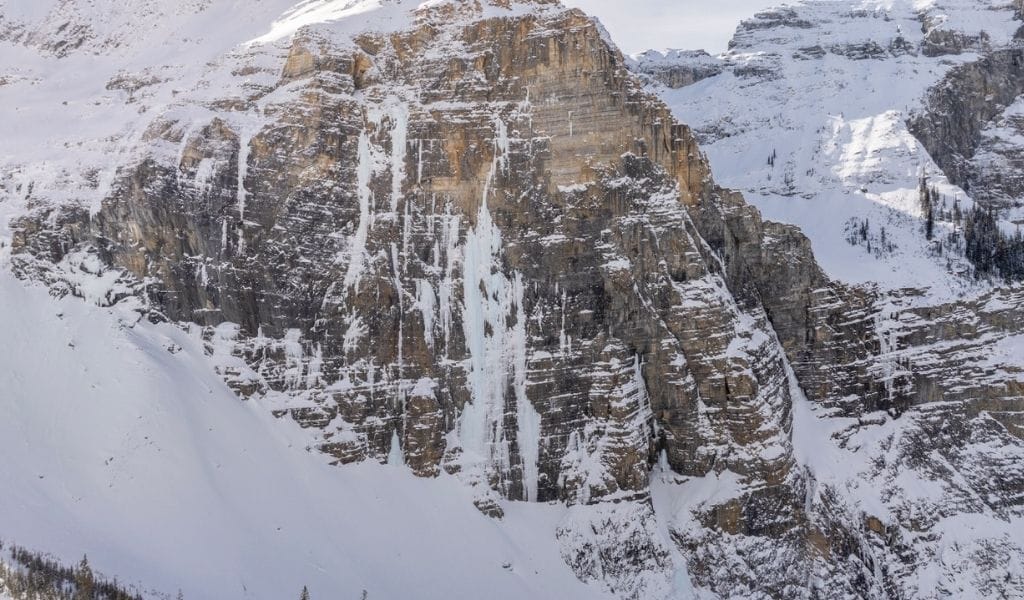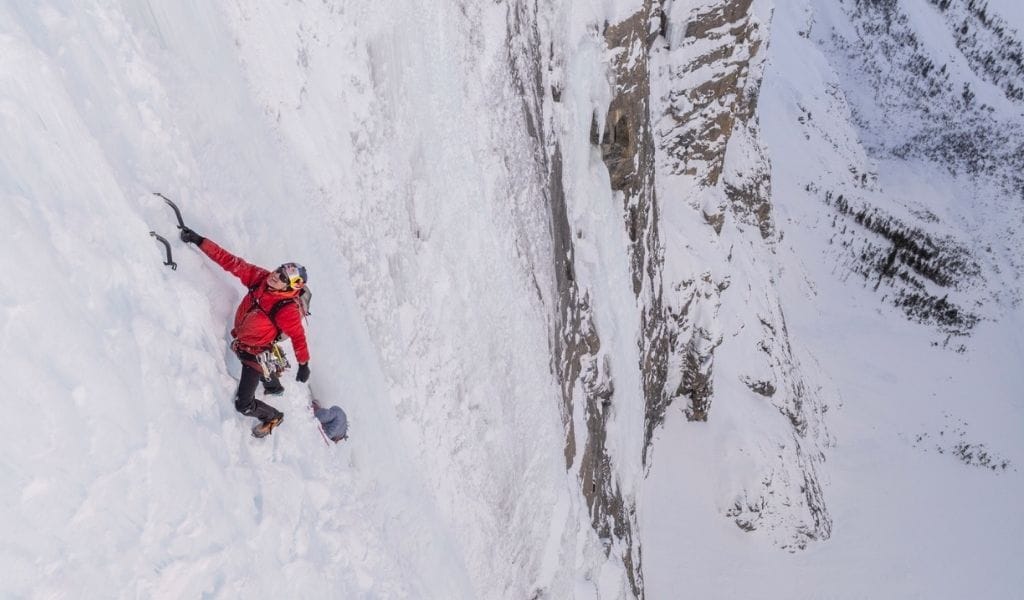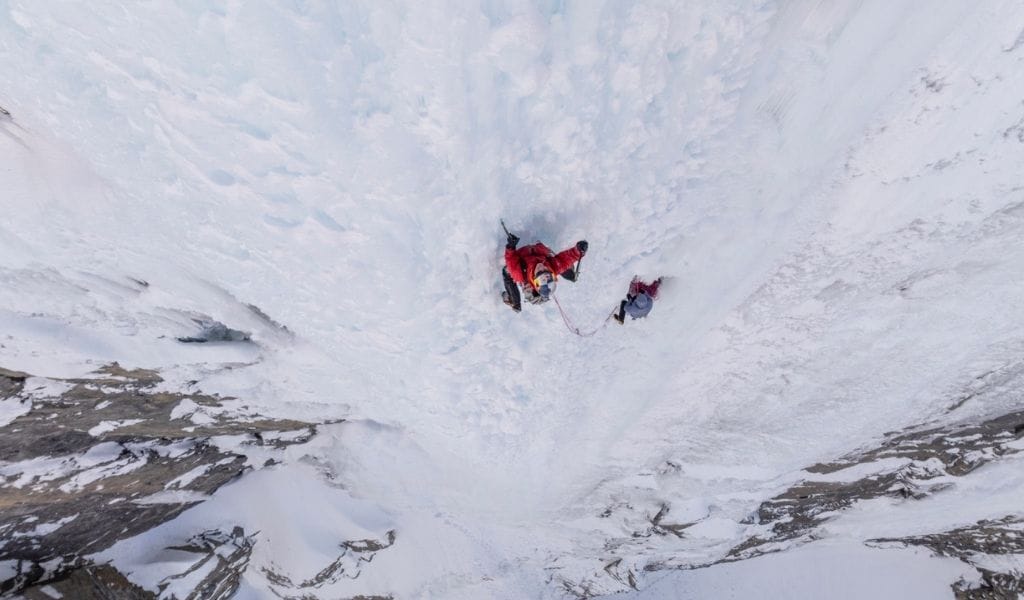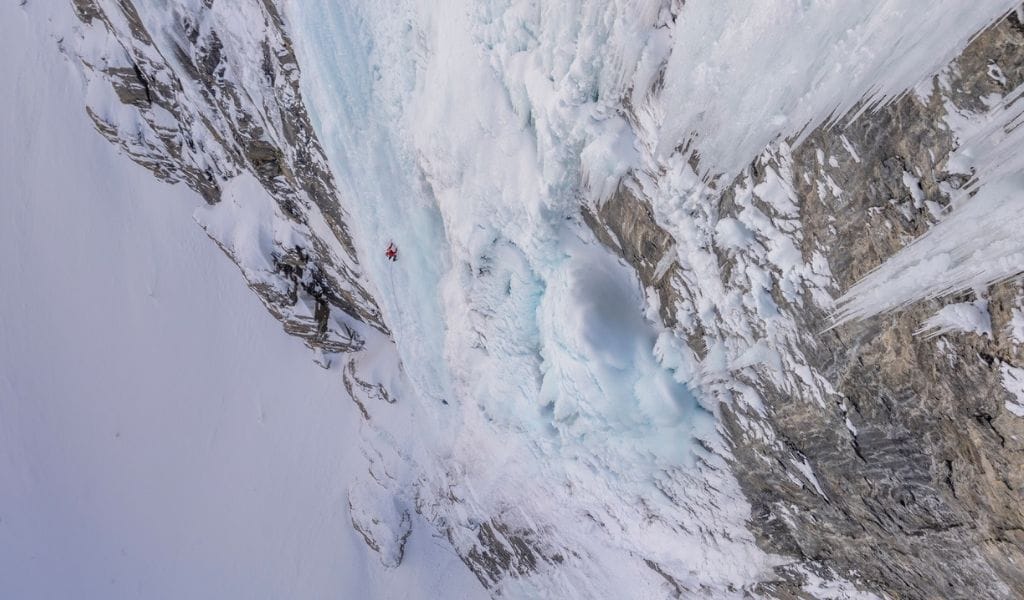- Bow Valley Insider
- Posts
- Will Gadd Leads First Ascent of a Wild, Hidden Ice Wall in the Rockies
Will Gadd Leads First Ascent of a Wild, Hidden Ice Wall in the Rockies
A new film captures his three-year quest through frozen wilderness

The Wall of Walls, hidden behind Mount Soderholm in the remote West Rockies, reveals four massive ice routes climbed by Will Gadd and Kirk Mauthner over three winters
BANFF — Ice climber Will Gadd has spent his life chasing the world’s wildest frozen walls, from Norway to Kilimanjaro. He has hung from waterfalls that collapse beneath him, led expeditions for National Geographic, and earned global recognition for feats that merge skill with survival instinct. Yet his latest discovery, a place he calls the Wall of Walls, was less than fifty kilometres from his home in Canmore.
“It’s the most full-on, intense, radical, complex, and cool climbing zone I’ve ever experienced,” Gadd said. “There are harder or longer routes out there, but none require the same education and wide skill set to succeed.”
The Wall of Walls sits behind Mount Soderholm in the remote West Rockies, invisible from any road or trail. You cannot see it unless you are in a bush plane, which is exactly how Gadd’s longtime partner Kirk Mauthner stumbled upon it. From the air, he spotted a curtain of ice hundreds of metres high and called Gadd, who had been searching for new climbs for decades.
“I’ve spent a lifetime looking for stuff like that,” Gadd recalled. “And it was right here.”
The film Wall of Walls, premiering at this year’s Banff Centre Mountain Film and Book Festival, tells the story of what followed: three years, thirty approaches, and four massive new routes up a frozen fortress that defied belief.
A climb that starts before the ice

Will Gadd leads a pitch on the Wall of Walls, carving upward through vertical ice
Even reaching the base of the wall is a test of endurance. The team first drove along an active logging road where the sound of transport trucks echoed through the forest. Then came a snowmobile ride, often in the dark, followed by hours of skiing through deep avalanche terrain. “Five or six hours of travel from Canmore just to start climbing,” Gadd said.
Every step brought risk. The snowpack in the western Rockies is notoriously unstable, and Gadd and Mauthner turned around from within sight of the wall more than once. “We’ve both seen the bad outcomes from avalanches,” he said. “Death is not abstract to us. Turning around is hard, but it’s better in the long run.”
In the mountains, retreat can be an act of courage. For Gadd, now 58, survival is no longer about youth or bravado. It is about judgment, humility, and the long game of risk management.
The art and physics of ice
For most people, ice climbing looks like controlled chaos: swinging metal tools into translucent walls and hanging from thin blades of steel. In reality, it is more like chess than combat. Climbers must read the ice’s texture, density, and temperature, constantly testing each placement before trusting it with their weight.
“The climbing there was harder than anticipated,” Gadd said. “Each placement had to be good enough that if your feet blew, you wouldn’t take the ride.”
The Wall of Walls demanded every technique he knew. Unlike simple “blue ice,” its surfaces formed in layers of snow and frozen melt, brittle and unpredictable. Falls were unthinkable. “It’s a big rig,” he said. “It beat us up.”
Naming the lines
Over three winters, Gadd and Mauthner completed four routes, each with its own character and name that reflected what they endured.
Enduro (220 metres, WI 5++) looked easy from afar but proved long and punishing.
Relentless (320 metres, WI 6+) became, in Gadd’s words, “a candidate for the best ice route on the planet.”
Infinite Gratitude (250 metres, WI 6++) captured their appreciation for still being strong enough, and alive enough, to climb at their age.
The final line, known simply as 118 (300 metres, WI 6 M7), was the hardest. “It’s thin, creative, and serious,” Gadd said. “I added a couple of bolts afterward because breaking both legs if I fell seemed stupid.” He laughed. “Now you’d probably only break one.”
In climbing shorthand, WI 6 refers to vertical or overhanging ice where protection is scarce. M7 means mixed terrain, where tools must hook rock as well as ice. These are routes few in the world could repeat.
The partnership

Will Gadd (top) and Kirk Mauthner (bottom) work in tandem on the Wall of Walls, each trusting the other as they navigate 300 metres of steep, brittle ice.
The film shows Gadd and Mauthner’s partnership as the true heart of the story. Both are professional guides with decades of experience, and both admit they could not have done it alone.
“Kirk knew everything about the snowpack, the machines, the haul road. I brought the climbing,” Gadd said. “Together we were far stronger as a team than we would have been cloned.”
Their friendship also gave them the freedom to make difficult calls without ego. More than half their trips ended in retreat. “We’d spend hours getting there and turn back a hundred metres from the base,” he said. “But we’d drive home saying, ‘We’re alive. We can try again.’ I never once thought a retreat was a bad decision.”
Climbing against time
Age runs quietly through the film. Gadd is 58, Mauthner 60. Both are still operating at an elite level, defying what most believe possible past middle age. Yet Gadd sees age as both limitation and gift.
“We’re old enough to know this isn’t a given,” he said. “We’re lucky to still move like this, but we also train hard. Motion is lotion. You have to keep moving.”
For him, the Wall of Walls was not just a physical challenge but a meditation on mortality. Over the years, he has lost more than two dozen friends to the mountains. “Am I somehow better than they were? I don’t think so,” he said. “But I still go. Why? Because these experiences give my life meaning. The question is how to do what I love and still survive.”
The lessons
Gadd often speaks about risk on his Instagram, drawing parallels between mountain sports and industrial safety. He believes that human complacency is normal, not rare, and that survival depends on building systems that account for it. In the mountains, that means redundant checks, partner verification, and open communication.
“We’re continually testing our ideas with each other,” he said. “It’s constant learning.”
That mindset shaped every decision on the Wall of Walls, from route choice to when to quit. “Complacency kills,” he once said in a post. “But expecting complacency and building strong systems, that’s what keeps you alive.”
Why it matters

Will Gadd against an ocean of ice
For non-climbers, Wall of Walls is as much about philosophy as it is about ice. It is about what drives a person to keep exploring when the rewards are intangible and the risks immense. It is about friendship, curiosity, and the lifelong pull of the unknown.
The wall itself remains hidden, unmarked on maps, and unreachable without days of effort. But for Gadd, that is part of the magic. “Every day was a giant mousetrap of a puzzle to solve,” he said. “But the cheese was fantastic.”
The film runs just thirteen minutes, but it distills three years of obsession into something intimate and raw. It is less about conquest than connection, to place, to partnership, and to purpose.
The climb within
As the credits roll, Gadd and Mauthner stand beneath the ice, exhausted and grinning. “I’m so grateful for this climb,” Gadd says. “To still be here, still doing it, still feeling this alive.”
For most of us, the wall is metaphor enough. We may never swing an ice tool, but we understand what it means to face something immense and keep going.
Wall of Walls premieres November 9 at the Banff Centre Mountain Film and Book Festival, followed by an online release beginning November 12.
Reply